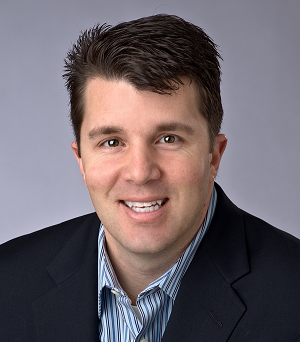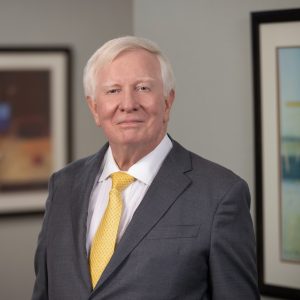CEO Leadership Series: Ed Seguine, CEO, Clinical Ink

HOW A CLINICAL TRIAL TECH COMPANY BALANCES GROWTH AND BUILDS CREDIBILITY
Clinical Ink, a global clinical trial technology company based in Horsham, PA., is on a roll. Headed by CEO Ed Seguine, the company has doubled its sales in the last two years, and 2019 is off to a record start. Clinical Ink is riding a wave of success from its development of a pioneering clinical trial technology platform that captures patient data in real-time to reduce costs and simplify the process for everyone involved – sites, sponsors, CROs, and especially patients.
In an interview with Ashton Tweed, Mr. Seguine discusses his strategy for navigating the financial and operational challenges of rapid growth.
You joined Clinical Ink in 2010, just a few years after the company launched. Why was this the right move for you?
At the time, I’d been in the clinical trial technology space for about 10 years, and during that period, I looked at the way that clinical trials were being executed and concluded that we weren’t really doing anything different.
Although the industry was starting to adopt new technologies, the process itself was complex, cumbersome, and manual. Sadly, the clinical trial business model still primarily revolves around transcribing data from system to system days or weeks after the patient leaves the office.
Departing FDA Commissioner Scott Gottlieb said on March 14, “The business model adopted by the clinical trial establishment just isn’t compatible with the kind of positive but disruptive changes that certain innovations can enable.”
Clinical Ink’s real defining moment was to shift all of that activity to what I characterize as “the moment that matters” during the patient visit. If you can do all that work during the moment that matters, you can have an impact on the execution of a protocol and on the clinical decision-making right then.
Unlike other approaches, you can have an impact on patient understanding of why they’re participating in a clinical trial. I felt we could bring about a substantive change in how the industry is collecting and delivering data by changing the point at which the patient interactions are happening.
What were your biggest challenges in the early days?
The biggest challenge of running Clinical Ink was to make sure that we were capital efficient so that we didn’t outstrip our funding and could control our own destiny.
Between 2010 and 2012, the economy wasn’t ideal for raising money for unproven startups. In 2012, we launched our initial product, but in the pharmaceutical industry it takes a long time to build credibility because you’re dealing with drug development timelines that are so long—it can be three or four years just to run a study and as long as eight to 10 years for a regulatory submission.
So, it takes a lot longer than in other industries for customers to have multiple experiences with your company and build confidence in a new technology platform—because its more than just the technology. Part of the problem with small companies in this space is creating a sustainable business model that allows you to bridge those operational realities and still survive when you’ve got investors with a shorter timeframe than what’s typical for the commercial adoption of new platforms.
How does this rapid stage of growth impact your leadership approach?
We’ve shifted from a “technology company” mindset that’s primarily focused on developing new features/functions to a “project delivery” company where the biggest challenges are how to use the technology to meaningfully impact clinical results.
Building operational capacity, project management, data management, and managing the support team—all of that is ancillary to Clinical Ink’s technology, but those things become what gives you the ability to deliver consistently and with confidence. I love it because you have a rolling set of new challenges to overcome, and we’ve been steadily jumping over each of those hurdles as we reach different growth thresholds.
What advice do you have for someone trying to build an organization’s credibility while raising funds at the same time?
The technology functionality, even if it looks great during a demo, is never going to differentiate you enough for a pharma company to risk doing something new. A lot of ideas also sound great when speaking at a conference podium, but don’t actually deliver in the real world. Customers are always going to look past the technology “buzz” to find reasons they should have confidence in your ability to deliver operationally. The earliest projects that you work on must be successful, with their success predicated on operations and not so much the technology.
A lot of early-stage companies get enamored with their own technology and want to build the full vision of all their technology can do first and then build the operations later or even minimize the need for operational expertise because the platform is so “simple” to use. But, build what you need to start to deliver, and as you gain implementation experience you are building credibility at the same time. Then you can go back and build the next incremental piece of your platform while you’re doing more studies. You can’t fully build all of it at once because you’ll run out of money—and inevitably what you initially build is not actually exactly what the market’s going to need.
Many startup founders have probably learned that lesson the hard way.
Yes. There’s a company that recently announced a very big deal and they’ve loudly touted the fact that they’ve been able to raise $100 million. In my view, that’s utterly short-sighted and evidence they don’t have a legitimate business model.
Why raise that much money before you have a known, viable platform? You don’t get credit for raising the most money, and a lot of companies have lost sight of that. It’s way better to be more capital efficient—it’s better for your investors, it’s ultimately better for employees, and it forces a discipline of thought. In a capital-constrained environment, we are only focused on doing those things that are most important right now. Companies always are busy, but are you doing the right thing, the most valuable thing? Being a little capital-constrained is not a bad thing.
What’s your strategy for raising capital?
In the early stages, you do whatever you can to raise money. Over time you need to have a plan to “recycle” investors—essentially match your investor base with an exit time horizon. What happens in this industry—at least, in our part of it—is a lot of technology companies start up, they get funding for three or four years, and then they sell out because they can’t build the operational capabilities and they can’t build the credibility fast enough.
We raised smaller amounts of money incrementally and, although we were a little bit messy in our financial structure, we were able to deploy that money well. Then, last May we packaged up our early investors, sold their shares to a private equity group, NovaQuest, and reset with a new investor base for the next stage of growth.
So, my philosophy is that you only fund yourself with the resources and the investor group that you need to get you to the next valuation inflection point. In order to get to that valuation inflection point, you need to be ruthless about what you need to do with the technology and what you have to do operationally to get there.
In this space, a lot of companies run out of money before they get to that big valuation inflection point, and, therefore, they have to sell out to a contract research organization or another technology provider. So, this space is dominated by—relative to other industries—a lot of low-dollar financial transactions that result in a lot of uncertainty for customers.
What are Clinical Ink’s main organizational challenges?
Our challenge is to always be adding to our execution capabilities and gaining the experience to solve problems as we expand into new countries, like Russia, China or Brazil. We need the expertise to execute and deliver our platform in real-world situations, in different therapeutic areas, in different countries, and in different deployment models. The focus on technology then shifts to the focus on delivery and getting everyone aligned on the most important things.
I’m actually most proud of the management system we’ve implemented at the company that is focused on having everyone doing the right thing. We defined every single function so that as we grow, everyone stays in their own swim lane. Employees don’t worry about other groups, but they know how they relate to other groups. Employees know who decides what, what they’re depending on others for, what they’re delivering to others, and what others are expecting to receive from them.
Based on the functional definitions, we created function-specific tracking sheets each with 10 core deliverables that are aligned around delivering what we call “true north”—the things that matter most. We review the core deliverables weekly and monthly, and they’re either red or green— green if they’re going good and red if they’re not on track.
How do you keep everybody on the same page in terms of knowing what true north is?
The most important piece is that everybody understands how their function relates to others and how their job relates to specific tracking sheet metrics. If something is not going right, it doesn’t mean the person is an idiot, it means something is not going right in the business.
Say a study gets delayed. That’s not our project manager’s fault, but if that study is delayed it’s going to have an effect on our revenue, so we need to make changes to either spend less or book more studies. Being able to identify that something is out of alignment with the plan is the most important thing, rather than hiding or ignoring it, or hoping things work themselves out.
We don’t tie these metrics to compensation because they’re geared toward making sure everyone understands the dynamics of the business. There’s no penalty if something is red, unless it’s consistently red because of poor leadership. That’s a different story.
So, when I have one-on-ones with my direct reports, we go through their tracking sheets and their problem resolution plans. It just comes down to the discipline of using the system that we put in place as our primary work tool, not as an afterthought for reporting what we’ve done.
Do new employees find all this discipline to be a culture shock?
Many of them are surprised that we’ve got this kind of discipline in place and I think it’s actually refreshing to them.
What advice would you give someone with a finance background who aspires to a leadership role?
A finance background requires you to know all the details, and bringing that same mentality into operations and management of technology gives you the confidence that the most granular activities are working. So, you have to be willing to get into the real tactical details and not just hang out at a strategic level. Then step back and let people run it.
Ashton Tweed would like to thank Ed Seguine for this interview. If your company needs help from members of the Ashton Tweed Life Sciences Executive Talent Bank, we can supply that assistance either on an interim or a permanent basis. Additionally, if you are among the many life sciences professionals affected by the changes in the industry, Ashton Tweed can help you find the right placement opportunity — from product discovery through commercialization at leading life sciences companies — including interim executive positions and full-time placements. In either case, please email Ashton Tweed or call us at 610-725-0290. Ashton Tweed is pleased to continue to present insightful articles of interest to the industry.
 Ed Seguine
Ed Seguine
Ed Seguine is the CEO of Clinical Ink. He previously served in positions including General Manager at Medidata Solutions, CEO of Fast Track System, Venture Investor/Finance Manager at Eli Lilly, and Director of Finance for Action Target. Mr. Seguine earned a bachelor’s degree in finance from Brigham Young University, an MBA from Indiana University’s Kelley School of Business, and an executive certificate in Strategy and Innovation from the MIT Sloan School of Management. Mr. Seguine and his wife have a son and daughter who will both be graduating from BYU and a younger daughter who will be attending BYU upon graduating high school. In his leisure time, he enjoys playing basketball, volunteering for his church, and spending time with his first grandchild.






1 Comment
Very insightful remarks. As an ex Finance person and a startup founder his remarks in focus really resonated with me. Even more unless we push fir change our eventual customer the Patient will be shortchanged